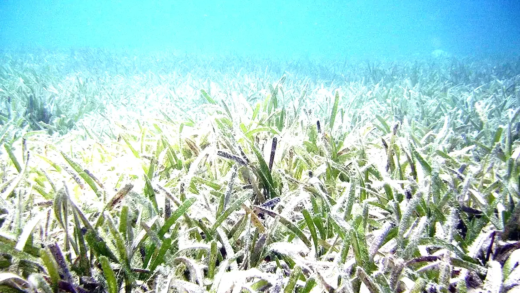Whale deaths significantly affect marine ecosystems and local communities. Causes include natural factors and human impacts like pollution and ship strikes. Decomposing carcasses enrich the ocean floor, supporting diverse marine life. Studying dead whales provides insights into health trends and environmental conditions. Beached whales face different challenges than those dying at sea, affecting local economies and tourism. Understanding these dynamics is crucial for conservation efforts.
Common Causes of Whale Death
Whale death causes can be attributed to various natural and human-induced factors. Natural causes include old age, disease, and predation. For instance, older whales may succumb to health issues similar to humans. Additionally, viral infections and parasites can weaken a whale’s immune system, leading to mortality.
Human impacts significantly contribute to whale deaths. Ship strikes are a major concern; large vessels can collide with whales, often resulting in fatal injuries. Pollution, particularly plastic waste and chemical runoff, poses serious risks as well. Whales can ingest harmful substances that affect their health, leading to premature death.
Furthermore, climate change alters ocean habitats, affecting prey availability and migration patterns. Entanglement in fishing gear also presents a grave risk, causing injury or drowning. Understanding these factors is crucial to addressing the decline in whale populations.
Whale Carcass Decomposition
After death, a whale’s body undergoes a fascinating decomposition process. Initially, the carcass sinks to the ocean floor, where it becomes a vital resource for numerous marine organisms. Bacteria and scavengers, such as sharks and crabs, begin breaking down the tissues, a process that can take years.
The whale’s body provides a nutrient-rich environment that supports a diverse range of life forms. Over time, organisms like deep-sea fish and specialized bacteria thrive, creating an entire ecosystem around the whale carcass. This phenomenon, known as “whale fall,” illustrates the importance of whale deaths in sustaining marine biodiversity.
Understanding whale carcass decomposition helps us appreciate the natural processes following whale death and their role in the ocean ecosystem.
Ecosystem Impact of Whale Deaths
The ecosystem impact of whale deaths extends far beyond the immediate area of the carcass. When a whale dies, it contributes to nutrient cycling in the marine environment. The decomposition of whale carcasses enriches the seabed, fostering growth among various organisms.
Moreover, whale falls serve as feeding grounds for scavengers, creating a unique habitat that supports species that might not survive otherwise. This cascading effect influences the entire marine food web, showcasing the ecological significance of whale mortality.
Whale deaths also highlight the interconnectedness of marine life. As apex predators, whales play a crucial role in maintaining balance within their ecosystems. Their mortality can trigger changes in population dynamics among other species, ultimately affecting the health of the entire ocean ecosystem.
Whale Fall and Marine Life
Whale fall refers to the phenomenon where a whale carcass sinks to the ocean floor, creating a unique habitat that supports a diverse range of marine organisms. This event can provide nourishment for a variety of creatures, from scavengers like sharks and crabs to specialized bacteria that thrive in the nutrient-rich environment. The process of decomposition can last for years, sustaining life in an otherwise barren part of the ocean.
During the early stages of a whale fall, opportunistic feeders quickly arrive to consume the soft tissues. As time progresses, the skeleton becomes a habitat for a multitude of organisms, including deep-sea fish and invertebrates. This cycle not only highlights the ecological role of whale deaths but also emphasizes the importance of these events in maintaining marine biodiversity. In fact, whale falls can support entire ecosystems, showcasing nature’s resilience and the interconnectedness of life in the ocean.
Understanding whale falls allows us to appreciate how these magnificent creatures contribute to marine life, even in death. The benefits extend beyond immediate scavengers; they create a lasting impact on the ocean floor, fostering a rich community of organisms that rely on this resource.
Benefits of Whale Deaths
Whale deaths provide numerous environmental advantages that are crucial for marine ecosystems. Firstly, the decomposition of whale carcasses enriches the seabed with nutrients, promoting the growth of various organisms. This process is vital for the health of the ocean, as it helps sustain food webs and supports species diversity.
Moreover, whale deaths play a significant role in nutrient cycling. When whales die, their bodies release essential nutrients back into the ocean, which can stimulate the growth of phytoplankton. This increase in primary productivity supports a larger array of marine life, including fish and other marine mammals.
Additionally, whale falls act as feeding grounds for scavengers, creating habitats for species that might otherwise struggle to survive. This phenomenon showcases the ecological significance of whale mortality and reinforces the idea that every part of the ocean ecosystem is interconnected.
Human Impact on Whale Mortality
Human activities significantly contribute to whale mortality, posing serious threats to these majestic creatures. Some primary causes include ship strikes, where large vessels collide with whales, often resulting in fatal injuries. This risk is heightened in busy shipping lanes, where whales may be feeding or migrating.
Pollution is another major factor affecting whale health. Plastics and chemical runoff can lead to ingestion of harmful substances, impacting whale populations. Additionally, climate change alters ocean habitats, affecting prey availability and forcing whales to adapt to new conditions.
Entanglement in fishing gear also presents a grave risk, causing injury or drowning. This human-induced mortality is alarming, as it reflects our impact on marine life. Understanding these anthropogenic factors is essential for developing conservation strategies aimed at protecting whale populations and ensuring their survival.
Studying Dead Whales
Studying dead whales offers valuable insights into their health and the environmental conditions of their habitats. Scientists conduct necropsies, which are autopsies performed on marine mammals, to determine the cause of death. These investigations provide data on whale health, allowing researchers to understand the prevalence of diseases and parasites. Additionally, tissue samples are often collected to analyze contaminant levels, helping to assess the impact of pollution on marine ecosystems.
Moreover, researchers use technology like satellite tags to track whale movements and behaviors before death. Analyzing patterns in mortality can reveal critical information about environmental stressors affecting whale populations. This research is essential for developing effective conservation strategies aimed at protecting these majestic creatures and ensuring their survival.
Beached vs. Ocean Deaths
Beached whales and those that die in the ocean experience different fates and implications. Beached whales, often referred to as strandings, are exposed to various risks, including dehydration, predation, and the harsh effects of the environment. When a whale washes ashore, it can pose health risks to local communities due to the potential spread of disease and the unpleasant odor of decomposition.
On the other hand, whales that die in the ocean contribute to the marine ecosystem through the whale fall phenomenon. Their carcasses sink to the ocean floor, providing a crucial source of nutrients for a variety of marine organisms. Understanding these differences is vital for developing appropriate responses to whale mortality, whether it be addressing the challenges posed by beachings or studying the ecological benefits of ocean deaths.
Impact on Local Communities
Whale deaths can have significant socio-economic implications for local communities. In regions where whale watching is a popular activity, the decline of whale populations can impact tourism and local economies. Communities that rely on healthy marine ecosystems may experience reduced fishing yields due to changes in the food web caused by whale mortality.
Furthermore, beached whales can create challenges for local authorities, as they often require removal and disposal, which can be costly and labor-intensive. The presence of a dead whale on a beach can deter visitors, affecting local businesses reliant on tourism. Therefore, understanding the impact of whale deaths on local communities is essential for fostering sustainable practices that support both human and marine life.





Comments are closed.